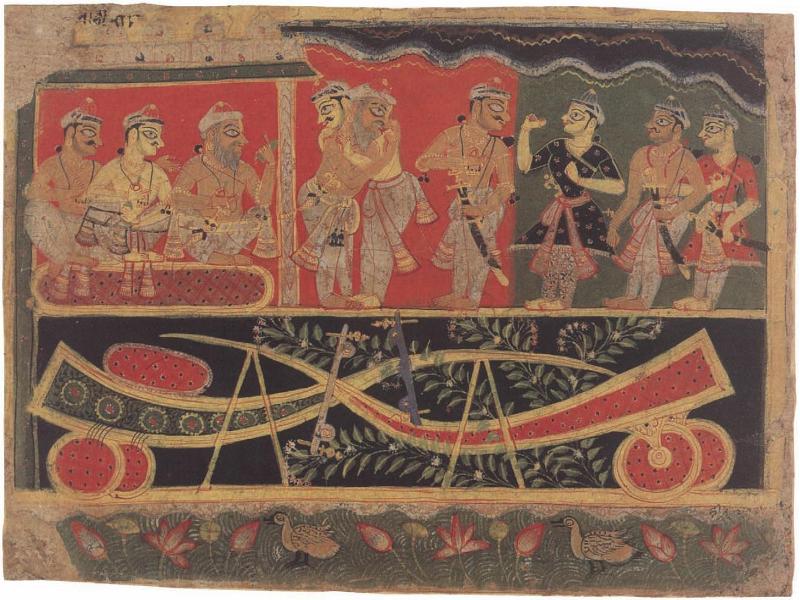
Try Amazon Audible Plus
Nanda and Vasueva
from a Bhagavata Purana, c.1520-30, India.

A larger image of Nanda and Vasueva from a Bhagavata Purana, c.1520-30, India


Nanda and Vasudeva
Delhi-Agra area, ca. 1520-30
Page from a dispersed Bhagavata Purana (Ancient stories of Lord Vishnu)
Ink and opaque watercolor on paper
6⅞ x 9⅜ in. (17.5 x 23.8 cm)
The Metropolitan Museum of Art, New York
Purchase, Anonymous Gift, 1982 (1982.209)
This work and catalogue numbers 3 and 4, three paintings in the Chaurapanchasika style, are from the oldest surviving Bhagavata Purana manuscript. They illustrate the tenth chapter, which details the life of Krishna, one of Vishnu's most popular avatars. The other Chaurapanchasika-style manuscripts are short and this one of which about two hundred survive, is by far the largest early manuscript extant. Both it and the much smaller Bhagavata Purana found at Isarda (cat. nos. 5, 6) are thought to have been produced in the Delhi-Agra area; it is probably not coincidental that Mathura, the birthplace of Krishna and an important pilgrimage site for his devotees, lies between those two cities.
With its multitiered composition, this painting recalls a bas-relief. In the center of the upper register Nanda and Vasudeva embrace, highlighted by a brilliant red background-a device that Indian artists often use to indicate the picture's energy center. Below, two carts resting by the side of a stream, starkly set against black, seem likewise to intertwine, while the swaying flowers echo the joyous spirit of the human encounter.
Source: p.27, Indian Court Painting, 16th-19th Century by Steven Kossak
via Metropolitan Museum of Art, New York